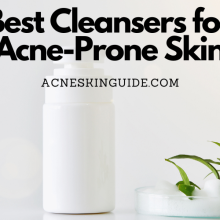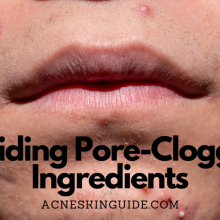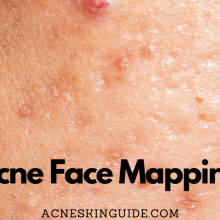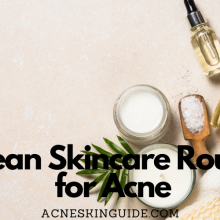Benzoyl Peroxide for Acne Treatment | Acne Skin Guide
Benzoyl peroxide is a potent topical ingredient widely used to treat mild to moderate acne due to its antimicrobial and keratolytic properties. It kills acne-causing bacteria and helps unclog pores by removing excess dead skin cells. Available in various over-the-counter and prescription-strength products like creams, gels, and washes, benzoyl peroxide is effective in reducing inflammatory acne lesions while being cost-effective and accessible.
When starting treatment, it’s crucial to introduce it gradually, follow a gentle skincare routine, and use sun protection to minimize potential side effects like dryness, irritation, and increased sun sensitivity. While it can be safely combined with other acne treatments, caution is advised regarding rare risks like bacterial resistance. For severe or persistent acne, stronger treatments under dermatological guidance may be required. Overall, with proper usage and management of side effects, benzoyl peroxide remains a reliable ingredient for improving acne and achieving clearer skin.
#1 Recommended Acne Treatment | #2 Recommended Acne Treatment |
 |  |

Unveiling the Benefits and Proper Use of Benzoyl Peroxide for Acne
Dealing with acne can be a frustrating and confidence-sapping experience. While there’s no one-size-fits-all solution, benzoyl peroxide has long been a trusted ally in the fight against pimples, blackheads, and other inflammatory acne lesions. This powerful topical ingredient combines antimicrobial and keratolytic properties, making it a potent weapon against the factors that contribute to acne breakouts.
What is Benzoyl Peroxide and How Does it Work?
Benzoyl peroxide is an organic compound that has been used in acne treatments for decades. Its primary mechanism of action is to kill Cutibacterium acnes, the bacteria that play a significant role in the development of acne. By reducing the population of these acne-causing bacteria, benzoyl peroxide helps to prevent new pimples from forming.
In addition to its antimicrobial effects, benzoyl peroxide is also a keratolytic agent. This means that it helps to break down and remove excess dead skin cells that can clog pores and contribute to the formation of blackheads and whiteheads. By keeping pores clear, benzoyl peroxide can prevent the buildup of oil and bacteria that lead to acne lesions.
Benefits and Uses of Benzoyl Peroxide
One of the significant advantages of benzoyl peroxide is its effectiveness in treating mild to moderate acne. It can be particularly useful for those dealing with inflammatory acne lesions, such as papules, pustules, and cystic acne. By reducing inflammation, benzoyl peroxide can help to minimize the severity and duration of breakouts.
Additionally, benzoyl peroxide is a cost-effective treatment option, with many over-the-counter products containing this ingredient available at drugstores and supermarkets. This accessibility makes it an attractive choice for those seeking an affordable acne solution.
Types of Benzoyl Peroxide Products
Benzoyl peroxide is available in various forms, including creams, gels, washes, and spot treatments. Over-the-counter products typically contain concentrations ranging from 2.5% to 10%, while prescription-strength formulations may contain higher concentrations.
Leave-on products, such as creams and gels, are designed to be applied and left on the skin for an extended period, allowing the benzoyl peroxide to work continuously. Rinse-off products, like washes and cleansers, are meant to be used for a shorter duration before being rinsed away.
Using Benzoyl Peroxide Effectively
When starting a benzoyl peroxide treatment regimen, it’s essential to introduce it gradually to avoid excessive dryness and irritation. Begin with a lower concentration, such as 2.5% or 5%, and gradually increase as needed and as your skin tolerates it.
It’s also crucial to follow a proper cleansing and moisturizing routine when using benzoyl peroxide. Cleanse your face with a gentle, non-comedogenic cleanser to remove excess oil and impurities, and follow up with a non-irritating moisturizer to help combat dryness.
Potential Side Effects and Precautions
While benzoyl peroxide is generally well-tolerated, it can cause side effects in some individuals. Common side effects include dryness, redness, scaling, and irritation. It’s essential to start with a lower concentration and gradually increase to minimize these effects.
Benzoyl peroxide can also bleach fabrics and hair, so be cautious when applying it and take care when washing or drying your face with towels or pillowcases.
Additionally, benzoyl peroxide can increase sensitivity to sunlight, so it’s crucial to use a broad-spectrum sunscreen when going outdoors to protect your skin from potential sun damage.
Combining Benzoyl Peroxide with Other Acne Treatments
In some cases, combining benzoyl peroxide with other acne treatments can enhance its effectiveness. For example, using it in conjunction with retinoids, salicylic acid, or antibiotics can help target different factors contributing to acne.
Oral medications like antibiotics or isotretinoin may also be prescribed in conjunction with benzoyl peroxide for more severe cases of acne. However, it’s essential to follow your dermatologist’s instructions carefully and watch for potential interactions or adverse effects.
Best Benzoyl Peroxide Products and Recommendations
Many reputable brands offer high-quality benzoyl peroxide products, including Neutrogena, CeraVe, La Roche-Posay, and Clean & Clear. When choosing a product, consider your skin type and budget, as well as the concentration and formulation that best suits your needs.
Dermatologists may recommend prescription-strength formulations for more severe or persistent acne cases. These products often contain higher concentrations of benzoyl peroxide and may be combined with other active ingredients for enhanced efficacy.
Real User Experiences and Results
While individual results may vary, many users have reported positive experiences with benzoyl peroxide for acne treatment. Consistent use can lead to a reduction in breakouts, improved skin texture, and an overall improvement in the appearance of acne.
However, it’s important to have realistic expectations and understand that it may take several weeks or even months to see significant improvement. Consistent use and patience are key, as benzoyl peroxide works gradually to control acne over time.
Important Questions and Answers
How long does it take to see results?
Most individuals will begin to see some improvement within 4-8 weeks of consistent use, but it may take longer for more significant results to become apparent.
Can benzoyl peroxide be used during pregnancy or breastfeeding?
It’s generally recommended to consult with a healthcare professional before using any new acne treatment during pregnancy or breastfeeding, as the potential risks and benefits need to be carefully evaluated.
Is benzoyl peroxide suitable for all skin types?
While benzoyl peroxide can be effective for many skin types, it may cause excessive dryness or irritation in those with very sensitive or dry skin. Those with these skin types may need to start with lower concentrations and use it less frequently.
Can benzoyl peroxide be used on the body or just the face?
Benzoyl peroxide can be used on the body, but it’s generally recommended to start with lower concentrations, as the skin on the body may be more sensitive than the face.
Potential Downsides of Benzoyl Peroxide
While benzoyl peroxide is generally safe and effective when used correctly, there are a few potential downsides to consider:
- Dryness and irritation: As mentioned earlier, benzoyl peroxide can cause dryness, redness, and irritation, especially when first starting treatment or using higher concentrations. This can be mitigated by introducing it gradually and using a gentle moisturizer.
- Bleaching and staining: Benzoyl peroxide can bleach fabrics and hair, so caution is necessary when applying it and handling towels or pillowcases after use.
- Increased sun sensitivity: Benzoyl peroxide can make the skin more sensitive to sunlight, increasing the risk of sunburn and potential long-term sun damage. Consistent use of broad-spectrum sunscreen is crucial.
- Potential for bacterial resistance: While rare, there is a possibility that prolonged use of benzoyl peroxide could lead to the development of resistant strains of acne-causing bacteria, potentially reducing its effectiveness over time.
- Limited effectiveness for severe acne: While benzoyl peroxide is excellent for mild to moderate acne, it may not be as effective for severe or cystic acne cases, which may require more aggressive treatment options prescribed by a dermatologist.
Conclusion
Benzoyl peroxide remains a reliable and effective ingredient in the fight against acne. When used correctly and combined with a good skincare routine, it can help control breakouts and improve overall skin appearance. However, it’s essential to be aware of potential side effects, introduce it gradually, and follow your dermatologist’s recommendations for optimal results.
By understanding the benefits, proper usage, and potential downsides of benzoyl peroxide, you can make an informed decision about incorporating this powerful ingredient into your acne treatment regimen.
#1 Recommended Acne Treatment | #2 Recommended Acne Treatment |
 |  |
Summary and FAQs
Can benzoyl peroxide be used on sensitive areas like the neck or back?
Yes, benzoyl peroxide can be used on sensitive areas like the neck or back, but it’s important to take some precautions:
- Start with a lower concentration: The skin on the neck and back can be more sensitive than the face, so it’s best to start with a lower concentration of benzoyl peroxide, such as 2.5% or less.
- Introduce it gradually: Don’t apply benzoyl peroxide all over the neck or back right away. Introduce it slowly by applying it to small areas first, and gradually increase the coverage as your skin tolerates it.
- Use a lower frequency: Instead of using benzoyl peroxide daily on the neck or back, start with every other day or every few days to avoid excessive irritation.
- Moisturize well: Be sure to use a gentle, non-comedogenic moisturizer after applying benzoyl peroxide to these sensitive areas to help counteract dryness and irritation.
- Watch for signs of irritation: Monitor the area for excessive redness, peeling, or discomfort, and discontinue use or reduce the concentration if these occur.
It’s generally recommended to check with a dermatologist before using benzoyl peroxide on large areas of the body, as they can provide personalized guidance based on your skin type and condition.
How long can benzoyl peroxide be used continuously?
There is no definitive time limit on how long benzoyl peroxide can be used continuously. Its long-term use is generally considered safe and effective for managing acne. However, here are some general guidelines regarding continuous use of benzoyl peroxide:
1) For most people, benzoyl peroxide can be used indefinitely as long as it is providing benefits and not causing excessive irritation or dryness. Many dermatologists recommend using it as a long-term maintenance treatment even after acne clears up initially.
2) It’s advisable to take periodic breaks from using benzoyl peroxide every few months by cycling off of it for 2-4 weeks. This can help prevent building up tolerance or resistance to the ingredient over time.
3) If you’ve been using the same benzoyl peroxide product continuously for over a year without seeing improvement in your acne, you may need to switch to a different concentration or formulation.
4) Long-term continuous use is more suitable for lower concentrations like 2.5% or 5% compared to higher concentrations like 10% which may be too drying and irritating with uninterrupted use.
5) During the course of continuous use, you may need to adjust the frequency (e.g. from daily to every other day) or combine it with additional treatments recommended by your dermatologist.
The key is to monitor how your skin tolerates and responds to continuous benzoyl peroxide treatment over time, and make adjustments as needed under the guidance of a dermatologist. As long as it remains effective and your skin can tolerate it, continuous long-term use is permissible.
Can benzoyl peroxide be used with other acne treatments like retinoids or antibiotics?
Yes, benzoyl peroxide can be used in combination with other common acne treatments like retinoids (vitamin A derivatives) and antibiotics. However, some precautions need to be taken:
With Retinoids:
- Retinoids (e.g. tretinoin, adapalene) and benzoyl peroxide can be an effective combination for treating acne.
- However, using them together can increase skin irritation and dryness.
- It’s recommended to apply them at different times of the day – retinoid in the PM and benzoyl peroxide in the AM.
- Start with lower concentrations of each and build up gradually.
- Use a good moisturizer.
With Antibiotics:
- Topical antibiotics like clindamycin are sometimes combined with benzoyl peroxide for better efficacy.
- This combination helps prevent antibiotic resistance.
- They can be applied together or one after the other has dried.
- Oral antibiotics may also be used along with topical benzoyl peroxide under a dermatologist’s guidance.
General Tips:
- Introduce products slowly and don’t combine too many potent treatments at once.
- Let your skin adjust for a few weeks before adding the next product.
- Consult your dermatologist for the appropriate regimen based on your skin’s response.
- Use a gentle, non-comedogenic moisturizer.
- Avoid overusing drying products together.
With proper precautions and monitoring, benzoyl peroxide can be safely combined with retinoids or antibiotics for boosted acne treatment under medical supervision.
Is benzoyl peroxide safe for use during pregnancy or breastfeeding?
The safety of using benzoyl peroxide during pregnancy or breastfeeding is not definitively established, and expert opinions tend to be cautious about its use during these times.
Pregnancy:
- There is limited data on the potential risks of using benzoyl peroxide topically during pregnancy.
- Since it is minimally absorbed through the skin, it is generally considered relatively low risk when used as recommended.
- However, many dermatologists still advise avoiding benzoyl peroxide during pregnancy, especially during the first trimester when fetal development is most vulnerable.
- If acne treatment is needed during pregnancy, alternative topicals like azelaic acid or glycolic acid may be recommended first before considering benzoyl peroxide.
Breastfeeding:
- Very little benzoyl peroxide is expected to be absorbed systemically and passed through breastmilk when used properly on non-mucous membranes.
- However, there is still not enough evidence to declare it completely safe for nursing infants.
- Some experts recommend avoiding application on the breast area as a precaution.
- Many advise getting approval from your obstetrician before using benzoyl peroxide while breastfeeding.
The general medical consensus is that benzoyl peroxide should be used cautiously or avoided during pregnancy and breastfeeding if possible, especially during early pregnancy. If acne treatment is necessary, alternative options may be preferable unless otherwise advised by your dermatologist or obstetrician after weighing the potential risks and benefits.
Can benzoyl peroxide be used to treat other skin conditions besides acne?
Yes, while benzoyl peroxide is primarily used for treating acne vulgaris, it can also be beneficial for certain other skin conditions in some cases. Here are a few examples:
- Rosacea: Some dermatologists may recommend using lower concentrations (2.5-5%) of benzoyl peroxide for managing papulopustular rosacea, a subtype with acne-like bumps and pimples. Its antibacterial properties can help reduce rosacea flare-ups.
- Seborrheic Dermatitis: The keratolytic and antibacterial effects of benzoyl peroxide can help control scaling, redness, and overgrowth of yeast in seborrheic dermatitis of the face and body.
- Folliculitis: Benzoyl peroxide may be used as a treatment for folliculitis, which is inflammation of the hair follicles often caused by bacterial overgrowth.
- Tinea Versicolor: Some studies suggest benzoyl peroxide can be an effective topical treatment option for the fungal skin condition tinea versicolor.
- Hidradenitis Suppurativa: For mild cases, benzoyl peroxide washes or creams are sometimes recommended as an adjunctive treatment for this chronic inflammatory skin condition.
However, it’s crucial to note that benzoyl peroxide is not officially approved for treating conditions other than acne. Using it off-label requires guidance from a dermatologist, who can evaluate if the potential benefits outweigh any risks based on the individual case. Improper or excessive use can lead to irritation, dryness, and other side effects.






